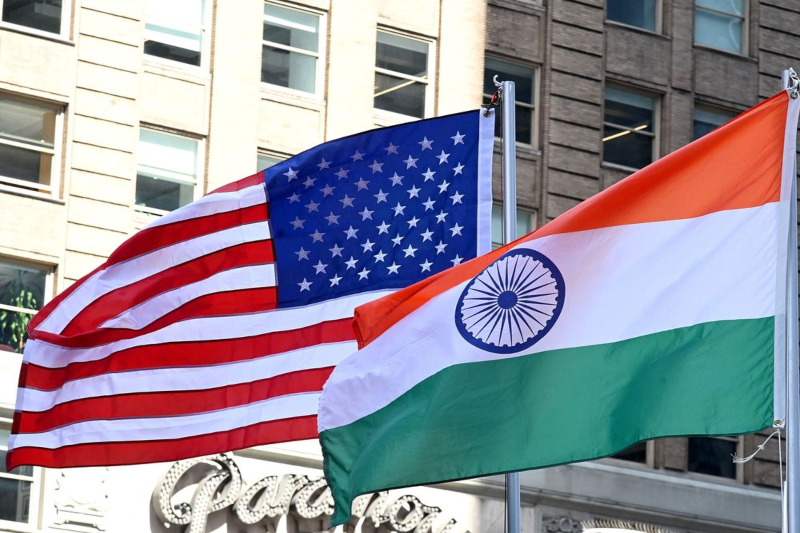
India, the wild card in US geopolitics
The end of the cold war, which was followed in the last decade by the “hot peace” between Washington and Beijing, globalization, and China’s economic and military growth, determining a new aggressiveness also on the Himalayan border, have changed the geopolitics of India.
They made it impracticable to isolate the significant powers from the “big game.” China’s growing influence in the Indian Ocean and Pakistan and its aggression on the Himalayan border directly affect it. Its economy is integrating into the globalized one. It desperately needs investment and technology transfers from abroad.
Despite these changes, New Delhi is striving to follow the principles that have informed its foreign policy since independence: non-alignment with the two poles of the bipolar world and the pursuit of multilateralism. Sooner or later, India will become part of the bloc of US-led democracies with an anti-Chinese function. Unlike what happened in the “cold war” in the “cold peace,” it is no longer possible to isolate oneself in a “third way.” The momentum of the process will depend on Chinese aggression and what Xi Jinping wants to achieve from the global superiority that China intends to achieve in 2049, the centenary of the creation of the People’s Republic. As usual, the EU is absent from this “big game.” While interested in India’s growth, it does not intend to jeopardize its commercial interests with China. Therefore, it overlooks geopolitical and security issues. Only the Asian democracies, first among which Japan and Australia, also consider the latter necessary. They are consequently reliable allies of the US and occupy a front-row seat.
Its ambitions are moderated by internal instability, the scarcity of economic and military resources, the reluctance to the external projection of power, and the persuasion of being protected by geography. To the north and East from mountains and deserts, the Indian Ocean from the Andaman and Nicobar Islands transformed into fortresses, which control access to the Strait of Malacca. The instability derives from the plurality of ethnic groups, languages , and religions and the fragmentation of the state. India cannot counter Chinese influence in the Indian Ocean and South Asia, which it considers an area of its exclusive control. The first is on the so-called “pearl necklace” on the chain of grounds extending from Malaysia to the Arabian Sea and the African coasts. The second derives from the alliance with Pakistan, a traditional enemy of India, and the vulnerability of the Northeast territories. From the latter derives the need to give priority to land defences. 56% of India’s defense budget goes to the Army. In the Navy, only 15%. 29% to the Air Force, nuclear forces, and everyday expenses.
Related Posts
Up to now, India’s relative independence in the conflict between China and the US has been made possible by maintaining the excellent relations it always had with Moscow, its leading arms supplier. However, they risk being eroded by the ever-closer ties between Russia and China, by Russia’s friendly relations with Pakistan, which began in 2015. Russia can offer India very little except arms and energy. Exchanges between the two nations amount to just over $ 10 billion, while the US is $ 150 billion.
India is the “wild card” of the US to build a new world order compatible with their interests, overcoming the competition with China. It is an essential element of the so-called “Bloc of Democracies” promoted by Joe Biden. He attended the latest G-7 meeting and is increasing economic, political, and military ties with the US. Just think of the dissolving of India’s perplexities towards QUAD (India, USA, Japan, and Australia) and its naval exercises, the US support for the admission of New Delhi as a permanent member of the Security Council and the Nuclear Suppliers Group, the sale of critical technologies and the permission of New Delhi to refuel the US P-8 Poseidon on its bases.
The conflicts between India and China are incurable, despite the two countries’ participation in the SCO and the BRICS group, by the principle of multilateralism. No one speaks anymore of “Cindia,” that is, of integration between the two Asian giants. But not even of “Chimerica” (China and America), dreamed of by Robert Zoellick. India adheres to the US-sponsored “Indo-Pacific” concept but feels separate from Eurasia and the Asia-Pacific region, which it thinks is too dominated by China. It is not part of APEC or RECEP. However, it maintains excellent relations with Japan. It has numerous joint ventures in the Middle East and Africa, which began after the conclusion of the Cold War and the opening of the Indian policy of the “Look East.” But, for now, India’s ties to Asian and Western democracies have very little.




